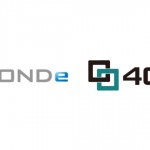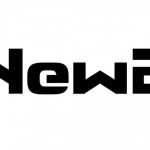Videologyが目指すアドテクノロジーのワンストップショップ化
Mobile and video are the fastest growing segments of display – eMarketer has video’s growth rates rising 46.5% for 2012, while it says smartphone based ad spending will jump 180% this year to top $4 billion. And yet, aside from Google/YouTube, Facebook, and Hulu, there are very few sites that can truly make the claim that either mobile or video is a significant revenue driver.
Part of the problem is the lack of a standard ad serving technology. Most agencies, marketers and publishers have to work with several system providers to handle video ad delivery and metrics.
Ad network Videology has been looking to expand its buy and sell side services over the past several months by positioning itself as a one-stop shop. After starting off as a video ad server and distribution point for marketers and agencies, it has begun to serve publishers in the capacity of a video supply side platform, in part through acquisitions like DSP LucidMedia last fall and then mobile data management and publisher platform Collider in August.
These moves erase silos between devices where consumers access video, says Aleck Schleider, Videology’s VP for Product Vertical and Data Solutions. Two recent partnerships with mobile analytics provider Korrelate and offline market researcher Kantar Shopcom serve a similar purpose. The ultimate goal for Videology is to for marketers and content companies to consider it the single connection for online in-stream video advertising with a seamless mobile and rich media display advertising line between consumers and their offline purchases.
“We’ve had a lot of success in ROI analysis in the PC world, and now, we’re more capable of providing those kinds of ad effectiveness insights across all platforms,” Schleider said.
Under Videology’s exclusive deal with Korrelate, the analytics company will provide census-based links between digital marketing and product purchases to extend auto purchase measurement capabilities to mobile devices.
Korrelate’s census-based analytics is based on what the company says is non-identifying data received from third parties about the past behavior of a user’s browser. The data gathered is grouped according specific categories of interest, which are then targeted with relevant advertising. It is combined with offline data to determine ad effectiveness. This method is sensitive to privacy concerns, according to Korrelate, because it doesn’t require any identifying information about the viewer, and no offline data can be tied back to an individual online user.
At the same time, Videology has entered an agreement with Shopcom designed to measure the impact of mobile brand messaging on retail purchases.
The layer Shopcom will provide on top of Korrelate’s auto shoppers could make serving mobile video ads on Videology’s partner sites a little more appealing to marketers. The thrust of both deals is on measuring sales impact.
“Mobile is hugely important, as consumers change their behavior, and how and where they make purchases,” said Kantar Shopcom CEO Kathryn Casavant. “Showrooming is one aspect for offline and online retailers, and increasingly for CPG. But overall, people are more comfortable with e-commerce in general. And being able to measure the direct impact of a mobile ad on sales is an insight that has the greatest value a marketing services company can provide.”
In the past, mobile audience buying was limited to a demographic set, Schleider says. That has evolved to looking at specific “purchase audiences,” like heavy yogurt buyers or people with seasonal allergies. “These data sets weren’t available yesterday,” he said. “But there is more opportunity and more choices for marketers to find their desired audiences. And mobile is increasingly where those opportunities lie.”
from:http://www.adexchanger.com/analytics/videology-looks-to-partners-not-purchases-for-deeper-mobile-moves/











